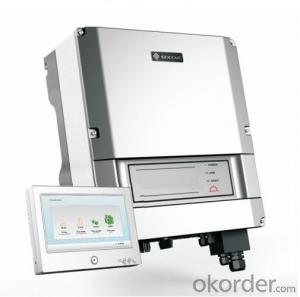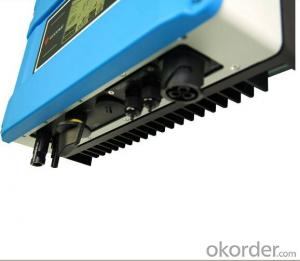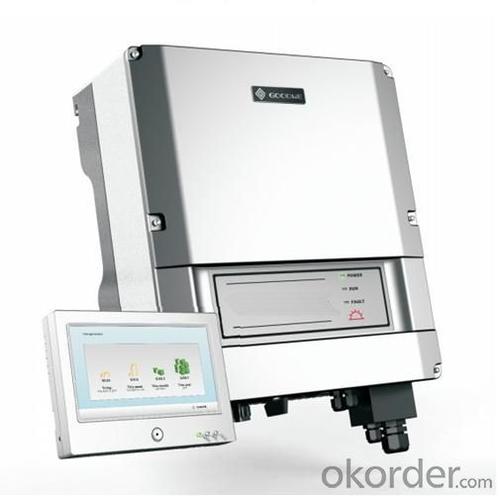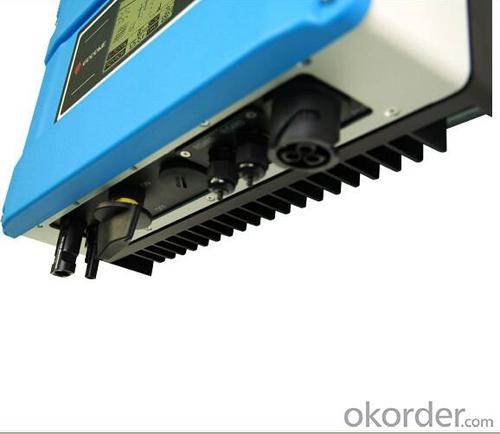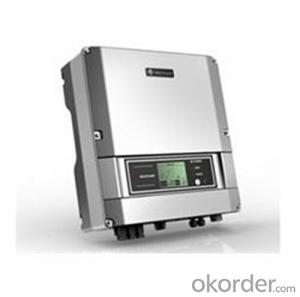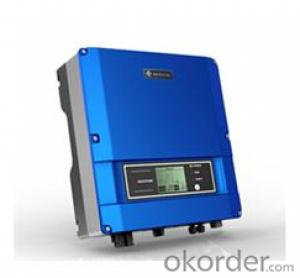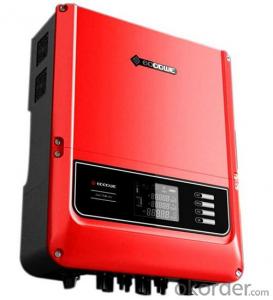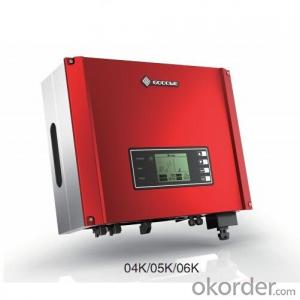IGBT On Grid Solar Inverter GW3000D-JP
OKorder Service Pledge
OKorder Financial Service
You Might Also Like
GW3000D-JP
JP Series Inverter is suitable to the domestic applications, and designed under modern ID concept, it has created a new standard for inverter technology with more advanced reactive compensation technology and dual MPPT trackers. Not only be able to connect with two phase grid system, this model but also could run as off-grid model, and the wide range of frequency of 50/60Hz makes it a good choice for Japan market. Moreover, the specialized monitor could perfectly control the inverter operation and data logging. IP65 high protective class of housing ensures the inverter work persistently and steadily under all critical environment.
Datasheet
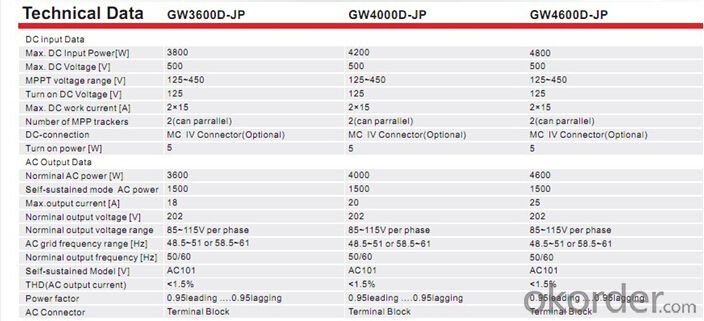
- Q: Can a solar inverter be used with different types of backup power sources?
- Yes, a solar inverter can be used with different types of backup power sources such as batteries, generators, or the utility grid. The inverter's role is to convert the DC power generated by solar panels into AC power that can be used by household appliances or fed back into the grid. It can seamlessly switch between different power sources, ensuring uninterrupted power supply and maximizing the utilization of renewable energy.
- Q: Photovoltaic grid-connected inverter without DC emc how will happen
- light is obtained by the electrons of the semiconductor device, thus generating electrical energy. This energy conversion of light energy into energy, that is, solar cells. Solar cells, like transistors, are made of semiconductors. Its main material is silicon, and there are some other alloys. High-purity silicon used in the manufacture of solar cells is subject to special purification. Solar cells as long as the sun or light exposure,
- Q: Can a solar inverter be installed outdoors?
- Yes, a solar inverter can be installed outdoors. However, it is important to ensure that the inverter is designed to withstand outdoor conditions, such as rain, humidity, and temperature fluctuations. Outdoor installation should also comply with local electrical codes and regulations.
- Q: What is the maximum AC voltage that a solar inverter can provide?
- The maximum AC voltage that a solar inverter can provide typically depends on the specific model and its specifications. However, most residential and commercial solar inverters provide a maximum AC voltage output of around 240 volts or 480 volts, depending on the electrical grid requirements and system configurations.
- Q: How does a solar inverter handle frequency variations in the grid?
- A solar inverter handles frequency variations in the grid by continuously monitoring the frequency and adjusting its own output accordingly. When the grid frequency increases, the inverter reduces its output frequency to match, and vice versa. This helps maintain a stable and synchronized connection to the grid, ensuring efficient power transfer and protecting both the inverter and the grid from potential damage or instability.
- Q: Can a solar inverter be used with solar-powered agricultural equipment?
- Yes, a solar inverter can be used with solar-powered agricultural equipment. A solar inverter is an essential component that converts the direct current (DC) produced by solar panels into alternating current (AC) that can be used to power various electrical devices and machinery, including agricultural equipment. By integrating a solar inverter, solar energy generated by the panels can be efficiently utilized to operate and power agricultural tools and machinery, making it a sustainable and cost-effective solution for farmers.
- Q: Can a solar inverter be used with solar-powered electric fences?
- Yes, a solar inverter can be used with solar-powered electric fences. Solar inverters are used to convert the direct current (DC) produced by solar panels into alternating current (AC) that can be used to power various electrical devices, including electric fences. By connecting a solar inverter to the solar panels of a solar-powered electric fence system, the DC power generated by the panels can be converted into the AC power required to operate the electric fence.
- Q: How does a solar inverter handle voltage fluctuations in the grid?
- A solar inverter handles voltage fluctuations in the grid by constantly monitoring the grid voltage and adjusting its own output voltage accordingly. When the grid voltage drops, the inverter increases its output voltage to compensate, and conversely, when the grid voltage rises, the inverter decreases its output voltage. This helps to stabilize the voltage and ensure that the solar system remains connected and operational even during fluctuations in the grid.
- Q: Can a solar inverter be used with a solar-powered pool heating system?
- Yes, a solar inverter can be used with a solar-powered pool heating system. The solar inverter is responsible for converting the direct current (DC) generated by the solar panels into alternating current (AC) that can be used to power various devices, including pool heating systems.
- Q: How does the quality of the AC waveform affect the performance of a solar inverter?
- The quality of the AC waveform directly affects the performance of a solar inverter. A poor or distorted waveform can lead to various issues such as reduced efficiency, increased power losses, and potential damage to the inverter. On the other hand, a clean and stable AC waveform ensures optimal functioning of the inverter, resulting in improved overall performance and reliability.
Send your message to us
IGBT On Grid Solar Inverter GW3000D-JP
OKorder Service Pledge
OKorder Financial Service
Similar products
Hot products
Hot Searches
Related keywords
